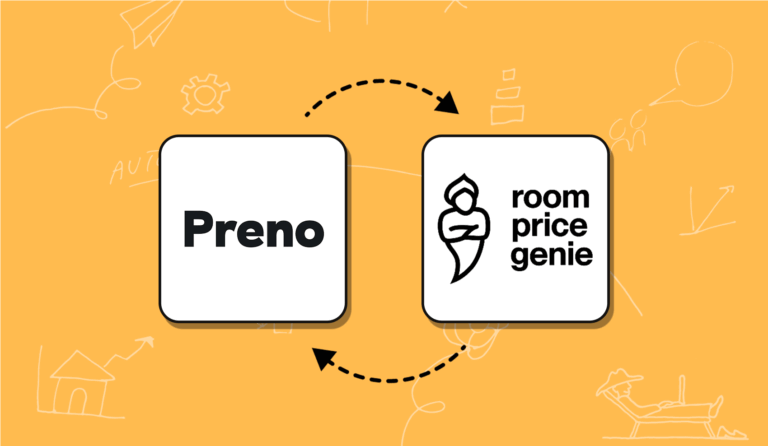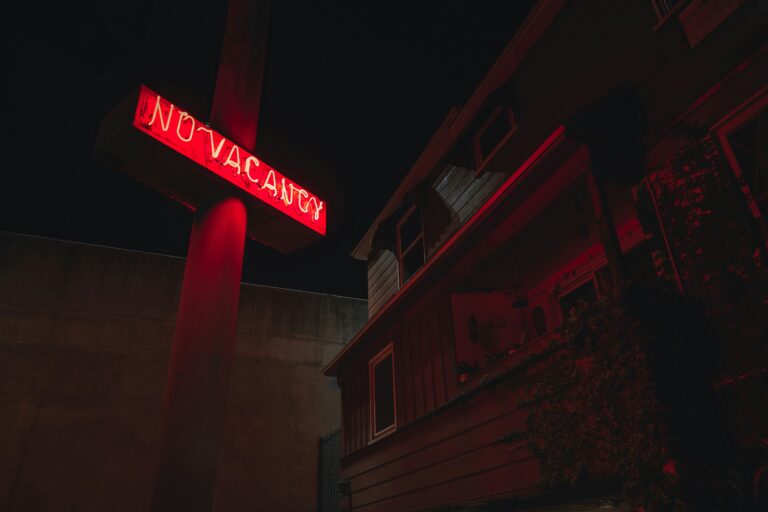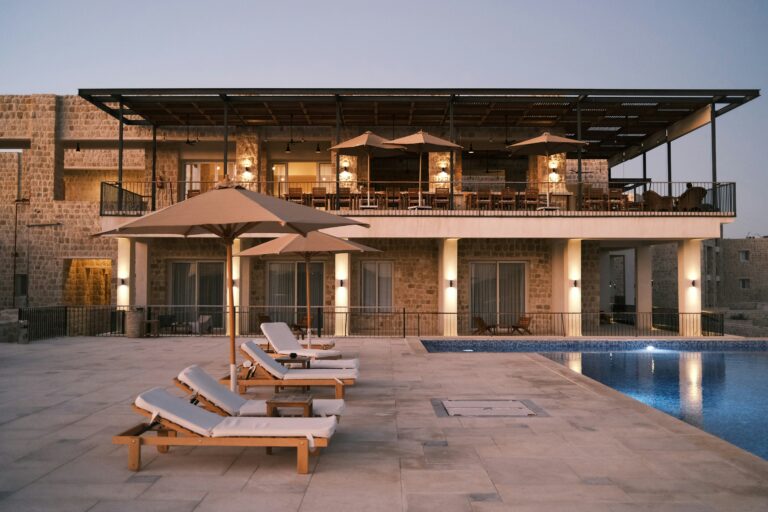In this article, we share a hotel customer journey map of 8 stages, detailing every point of contact that impacts the guest experience
The hotel guest experience journey covers every point of contact that a guest has with your business. From hearing or reading about your accommodation, to staying at your property, to checking-out and sharing this experience with friends.
There are a number of steps in the hotel guest journey, and as a hotelier, it is your responsibility to cover all grounds. And by this we mean, ensuring that the hotel guest experience is not only pleasant, but exceptional every step of the way.
Starting with a powerful word-of-mouth presence (both traditional and e-WOM), and ending with a thank you follow up email – the following article maps out in 8 stages, what the hotel guest experience journey should look like for your hotel.
Ebook Contents
Stage 1: Inspiration & research
Stage 4: Checking-in to your hotel
Stage 5: Staying at your hotel
Stage 6: Checking-out of your hotel
Stage 7: Post-departure contact
Stage 8: Word-of-mouth & reviews
Mapping out the hotel guest experience journey: 8 stages

In this stage, potential guests research your property, make comparisons with your competitors and get inspired to stay at your property.
The first step in the hotel guest experience journey is when a potential guest hears or reads about your property. Becoming aware of your property is the first point of contact, so this means that any information a guest comes across during this stage will form their impression of your property, and influence their decision whether or not to book with you.
In planning for the hotel guest experience journey, many hoteliers often overlook this stage, as they focus more on how to provide an exceptional experience during a guest’s stay. But the guest experience pre-stay, during the inspiration and research stage, is absolutely vital, because if this stage doesn’t bode well for a potential guest, they will not convert into a booking.
The following is a list of factors that influence stage 1 of the hotel guest experience journey:
- Traditional word-of-mouth (WOM)
I.e. recommendations from friends, family & travel agents
- Electronic word-of-mouth (e-WOM)
Online hotel reviews & forum discussions
- Online Travel Agents (OTAs)
Hotel ranking, competitor comparisons & reviews
- Social Media
How active your accounts are, images of your property, customer engagement
- Search Engine Optimisation (SEO)
How high your Google positioning is and/or if it’s easy to locate
- TripAdvisor rating
Guest reviews, rating out of 5, ranking in comparison to competitors
- Your website
Quality of design, ease of navigation, mobile-friendliness, easy booking engine, & quality of content
Resources to help you strengthen stage 1 of the hotel guest experience journey:
- Article: Hotel WOM (word of mouth) – why it still counts
- Article: 5 reasons why TripAdvisor is important to your hotel
- Article: How to respond to negative hotel reviews
- Article: Social Media Marketing for Hotels
- Article: How to promote a hotel online
- Article: SEO for hotels: how to strengthen your hotels search engine optimisation
- Case Study: How to sell experiences, not just rooms: Damien Knowles’ formula for hotel growth
- Ebook: Guide: How to increase direct hotel bookings

In this stage, the guest actively makes a decision to book a room at your hotel – you have to put in place the software and tools to make this process fast and effortless.
During the second stage of the hotel customer journey map is the guest’s decision to make a booking. This stage might take place on an OTA website, or directly via your hotel website. Either way, this process needs to be effortless and fast for your guests – if your website loads slowly, or a guest finds it difficult to book, this will result in a lost booking.
ENJOYING WHAT YOU’RE READING? JOIN OUR NEWSLETTER EMAIL LIST
Join our newsletter list & receive helpful hotelier tips & tricks, industry trends & more!
In order to effectively impress guests and ensure that bookings go through during this stage of the hotel guest experience journey, you must:
1. Have powerful profiles on the world’s most popular OTAs
Nowadays, many travellers book accommodation via OTAs, due to the convenience of price comparing with competitors. In order to remain competitive, you must list your hotel on all of the main OTA sites such as Booking.com, Expedia, etc.
You should also do everything you can to improve your listing and rank better on these sites, including requesting and replying to guest reviews. The more powerful the profile, the more likely to convert a guest’s interest into a booking.
2. Be seamlessly set up & connected with a powerful Channel Manager
In order to collect bookings via OTAs, you must be set up with a powerful Channel Manager software, so that reservation data can seamlessly sync in real-time from your OTA profile to your hotel management system.
Preno’s Channel Manager broadens your reach by connecting with 50+ of the world’s most popular OTAs. Learn more about Preno’s Channel Manager here.
3. Have a clear booking button on your website, & be set up with a powerful Booking Engine
The other key element that has the power to make or break stage 2 of the hotel guest experience journey, is your hotel Booking Engine. When a guest makes a decision to book directly via your website, this works favourably for your business, as you can collect full revenue, as opposed to losing the 15% commission fees when guests book via OTAs.
Your hotel website should have a clear booking button, which should be visible on all site pages, have a fast loading link, and be set up with a powerful Booking Engine software. Without these elements, a guest may find it difficult or slow to make a booking, and give up and move on to a competitor.
Preno’s fast booking engine is easy to navigate and fast to book; meaning that more guests can book directly. Learn more about Preno’s booking engine here.

In this stage, your property is now in direct contact with the customer – it marks the beginning of your relationship with the customer, and influences their personal opinion of you.
The first hard part is now over – you’ve done your marketing, you’ve impressed the potential guest in the inspiration stage, and you’ve converted them into a booking. But now that the booking is in, you’ve got to convert this acquired revenue, into an exceptional hotel guest experience, so that they leave fully satisfied and share this positive experience with other travellers.
This stage may not seem important as the customer has already locked in a booking, and they’re not at your property yet; but do not overlook it, because the pre-arrival contact stage is just as important as any other.
In this stage, you set up how you communicate directly with your guests, and this is where their opinions of you start to shape. What they’ve read about you online and heard about you from other travellers impacted their decision to stay with you, but now that they’re conversing with you directly, it is time to form their own opinion.
This stage of the hotel customer journey map also offers you a chance to collect additional revenue, which otherwise may not have been acquired. I.e. with order bumps, up-selling and cross-selling techniques.
Here is our suggestion for a pre-arrival email contact sequence (including order bump tactics):
- Instant – Booking confirmation
- 30 days – These must-do activities often sell out in *insert location* early
- 14 days – Things to do while you stay in *insert location*
- 5 days – Upgrade your room
- 2 days – Would you like coffee delivered each morning?
Resources to help you set up automated emails & pre-arrival order bumps:
- Ebook: 16 ways how to increase hotel revenue – order bumps section
- Ebook: 16 ways how to increase hotel revenue – email automation section
- Preno Academy Video Course: How to use email automation to increase your revenue
- Downloadable email templates: Automated emails to help increase revenue

In this stage of the hotel guest experience journey, this is your first point of contact in-person with the guest. The check-in staff must be kind and professional, and the process must be seamless.
All of the stages leading up to a guest checking-in to your hotel were crucial to converting interest into a booking, and forming a positive outlook of your property. Now that the guest has walked in those front doors, it is time to do nothing less than impress.
The check-in process is the first time your guest interacts with your staff face-to-face – it must be perfect.
Here are a list of things to master in your hotel check in process:
- Professionally presented, knowledgeable & welcoming front-desk staff
Your front-desk staff should be dressed professionally, in either uniform or tidy business attire.
- Fast, seamless check-in process
The guest booking should be easy to find and fast loading so that you can get the guest checked in quickly.
- Front-desk staff that go the extra mile
The hotel check-in process is not just about welcoming guests, and giving them their room key – it’s about informing them of all of the facilities available, the front-desk staff times, important phone extension numbers, and also activity and transportation recommendations in the area.
The difference between a good check-in process, and a great check-in process, is one where the hotel staff make the hotel guests feel supported, and well looked after.
PRENO TIP
As a hotelier, you need to ensure that your business is well-equipped with powerful software that makes it simple for front-desk staff to find bookings and check guests in. This will also ensure there are no mistakes such as double bookings, as something like that can negatively impact the guest check-in process. See how Preno eliminates double bookings.

In this stage of the hotel guest experience journey, the guest is immersed in the accommodation atmosphere. The experience of actually staying at your hotel is what will shape the hotel guest experience the most.
Congratulations, the guest has now checked-in to their room! It’s stage 5 of the guest experience journey – the time to impress the guest with your amazing accommodation facilities, comfortable bed, helpfulness of staff, and so on!
Here’s a list of things that will shape the guest experience at your hotel property:
- Quality & comfort of room
- Comfortableness of bed
- Cleanliness of room
- Interior design
- Spaciousness of room
- Window view
- Sound-proofness
- Friendliness & helpfulness of hotel staff
- Room service staff
- Front desk staff over phone
- Housekeeping staff
- Willingness to go the extra mile
- Friendliness (a smile goes a long way!)
- Accommodation facilities
- Cleanliness of pool & spa
- Massage or pampering experience
- Quality of food & ambience at hotel restaurant or bar
- Safety of vehicle in valet parking (i.e. no damage)
- Special services & added touches
- Coffee delivered to room each morning
- Morning wake up calls from front-desk
Examples of things that could go wrong at your property & how you can rectify these bad experiences:
- Room key doesn’t work
- Maintenance issue – e.g. shower doesn’t work
- Service doesn’t meet standard – e.g. staff unfriendly
- Poor quality of restaurant food
- Disturbance due to other guests (e.g. excessive noise or poor manners)
Best case scenario, your hotel guest has a relaxing stay with exceptional service, and leaves your hotel with a smile on their face (or maybe not too big of a smile, because they’re sad to leave!).
But don’t be alarmed if small things go wrong, small mistakes can happen, you and your staff are only human! Just be sure to acknowledge and rectify any issues that may occur during a guest’s stay with you.
For example, if a hotel guest complains that the restaurant food is poor quality, cook them another fresh meal, and provide a benefit (such as a free meal) for this inconvenience that they had to endure.
In this stage of the hotel guest experience journey, you can also automate guest emails (just as you did pre-arrival).
Here is our suggestion for a during stay email automation sequence:
- Welcome – Wi-Fi password + other useful information for your stay
- 10 things to do while you’re here
Resources to help you foster the guest experience & set up ‘during stay’ email templates:
- Article: Creating memorable guest experiences for your accommodation
- Article: Tips on how to personalise your guests’ stay
- Downloadable email templates: Automated emails to help increase revenue

In this stage of the hotel guest experience journey, the guest leaves your property, settles any payments they owe, and have their final point of face-to-face contact with your staff.
An important thing to remember when it comes to hospitality, is that the smallest details can make or break a positive experience for a guest.
For example, if a guest asks for (or even better, you offer) a late check-out – providing them with those extra couple of hours to sleep-in, enjoy a hot spa or just relax, before going home, could turn a good experience into a great one. In the hospitality industry, details matter.
During the check-out stage of the hotel customer journey map, it is important to remember that even if the guest has enjoyed their stay up until this point, something negative (even small, such as a bad coffee) can alter a great guest experience to a poor one.
Here are some examples of things that can impact the hotel guest experience during check-out:
- Friendliness & helpfulness of front-desk staff
- Acceptance of late check-out request (or offer of one)
- Staff going the extra mile by offering to store guest luggage, offering to book a taxi, etc.
- Fast & seamless check-out process (a powerful hotel management system can help you with this)
- Friendless & professionalism of valet & door staff
- Clear instructions of check-out process (e.g. so no unexpected cleaning fees are charged)

In this stage of the hotel guest experience journey, you have the opportunity to ask the guest to leave a review, and invite the guest back for a repeat visit.
Once a guest leaves your property, the hotel customer journey map does not finish there. There is still post-departure contact that has the ability to impact a guest’s opinion of you. (And there is also hotel word-of-mouth – but we’ll get to that later.)
After a hotel guest checks-out, you’ll want to stay in touch with them via email, to let them know that you’re still there. This can be beneficial in inviting them to leave a review, inviting them to return, and making them happy by thanking them for their stay with you and offering them a discount or voucher should they return.
Here is our suggestion for a post-departure email automation sequence:
- Instant – Thank you – Receipt
- 1 day – Share the love
- 7 days – Did you do any of these while you visited *insert location*? Refer a friend – 10% off their visit
- 5 months – Remember how good it is to visit *insert location*
- 10 months – Visiting *insert location* again?
Resources to help you set up post-departure emails to foster stage 8 of the hotel customer journey map:
- Ebook: 16 ways how to increase hotel revenue – email automation section
- Preno Academy Video Course: How to use email automation to increase your revenue
- Downloadable email templates: Automated emails to help increase revenue

In this final stage of the hotel customer journey map, the hotel guest shares their experience at your hotel with other travellers. This stage is very important – never underestimate the power of word-of-mouth.
Every stage of the hotel guest experience journey has led up to this moment – the guests final review of your property. Are they happy, upset, or over-the-moon with their experience? This is the stage where you find out.
There are two main ways that guests share their experience at and opinions of your hotel property:
- Via traditional word-of-mouth (WOM)
- Via online review sites such as TripAdvisor (also known as electronic WOM, or e-WOM)
Resources to help you understand the influence of hotel WOM & tips on how to respond to online hotel reviews:
- Article: Hotel WOM (word of mouth) – why it still counts
- Article: 5 reasons why TripAdvisor is important to your hotel
- Article: How to respond to negative hotel reviews
Don’t miss a step. You have the power to wow your guests from inspiration (pre-booking) to memories (post-departure).
Foster the hotel guest experience journey, and, done right, step 9 will be a repeat visit.
From the moment a potential guest is made aware of your hotel property, every single step from then on shapes the hotel customer journey map. From the reviews they read about you online, to the design of your website and easiness of booking – to staying at your hotel, forming their own opinions and sharing this with others.
As a hotelier, it is your job to cover all grounds. You have to ensure to put in place every measure you can to ensure the entire hotel guest experience journey is not only seamless, but exceptional.
Taking the time to foster the hotel customer journey map could be the difference between you and your competitors. Don’t overlook it.
In search of a powerful hotel software system that automates guest emails, streamlines hotel processes & more?
Transform Your Guest Experience With Preno
With Preno, seamless management is just a click away. Embrace the future of hospitality with our free trial, no strings attached.
Click here to download the below FREE infographic of the 8 stages of the hotel guest experience journey.






